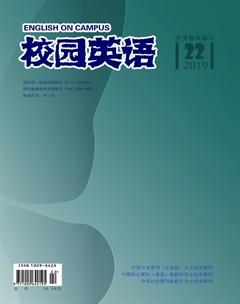基于主题意义探究的高中英语阅读教学实践
【摘要】本文基于主题意义探究应遵循的原则,分析了主题式教学策略的特点,并结合教学实例探讨了该策略的实施要点,旨在帮助教师灵活运用主题式教学策略,提升阅读教学效果。
【关键词】主题;教学策略;高中英语;阅读教学
【作者简介】覃矜(1984-),女,广西南宁人,南宁市第三中学,中学一级,教育硕士,研究方向:学科教学(英语)。
2017年普通高中英语课程标准把主题语境列为课程内容的第一要素,主题意义的探究过程能充分激活学生已有知识、经验和智慧,发展其主动思维的意识和水平,促进其情感态度价值观的形成,使其更好地理解世界和参与社会。
一、主题意义教学设计的步骤和设计原则
主要有三个步骤:第一,探究文本素材所呈现的话题信息;第二,探究文本话题所承载的主题;第三,探究主题所依存的社会真实情境。基于主题意义探究的课程设计思路如下:第一,明确主题语境的探究目的。第二,探究活动要逐層深入。第三,主题情境的课堂要有主线来引领语言、技能和意义的探究过程。
二、基于主题意义探究的阅读教学案例
本课介绍了曼德拉帮助黑人Elias,之后Elias也帮助曼德拉的故事。通过本节课的学习,学生能够理解“帮助”这个主题的意义,并在实际生活中采取适当的行为。具体教学过程如下:
Step1:Show a photo of Yangyang and a short video of some great people. Ask students to see the differences between a famous person and a great one.【设计说明】激活学生原有知识。
Step2:Ask the question: Are these famous people also great people? Choose one to talk about.
Sample: Sun Yat-sen is a great person who worked selflessly to save the old China.
Step3 Task 1: Skimming: Read Para1 to get the main idea and predict the content.
Title Narration when, where, who, what, why, how
Para1: main idea
Prediction: What will be talked about in the following paragraphs?
【设计说明】
遵循语言学习逐层深入的原则,让学生获梳理与主题相关的事实性信息,将关键信息和问题提取出来,激活学生的已知,从而实现对文章后续的预测。
Task 2: Scanning: Read the text carefully and finish the following three tables.
【设计说明】学生通过阅读获取信息,梳理与主题有关的信息,形成文本的基本框架,完成与主题相关信息的获取与梳理、概括与整合的自主探究活动。
Step4 Post-reading:Task 1: Retelling(An interview):
Suppose you are Elias. Your partner is a reporter. He is now asking you the following questions.
R: I know you are grateful for Mandelas help.
Why did you turned to Mandela for advice?
E: (worried about)_________________
R: How did he offer guidance to you?
E: (be generous with)_______________
R: As I know, not only you but also many other black people have got his help.What was their unfair situation?
E: (could not vote/get/live in…that they wanted)
R: How did he lead the black to fight for rights?
E: (fight; attack; violence)
R:In your opinion, what makes Mandela so great?
E: (devoted himself to helping)
Task 2: Critical thinking: Why does Elias tell Mandelas story through “I”? True; Convincing;
The first-person point of view:to see the whole from the small
【设计说明】
深层探究主题意义,通过引导学生关注写作手法和篇章逻辑,进而促进学生对语篇内容的理解和主题意义的然就。
Task 3: Discussion: what small things can we do to be a better person? For classmate; for our family; for our school.

【设计说明】
让学生将所获取的主题相关知识、观念迁移运用到新情境中。
三、课后反思
结合学生的的课堂生成和听课专家的反馈,本节课在主题情境探究方面的成功经验可归纳为以下几点:首先,主题意义探究借助了结构图的形式,让学生自主探究文本结构,关注主题意义的生成过程,加深对文本结构的理解并发展思维。其次,给学生提供了表达看法的语言脚手架,让学生生成完整、清晰、有逻辑的表达。最后,鼓励学生把所学的主题知识拓展到新的情境中,多维度地建构基于该主题的结构化知识。
总之,主题意义的探究需要情境化,教师需要根据文本解读与主题相关的内容并结合学生实际整合重要的结构,为学生运用相关语言技能和内容提供支架,最后实现新情境迁移,从而促进其核心素养的有效培养和落实。

